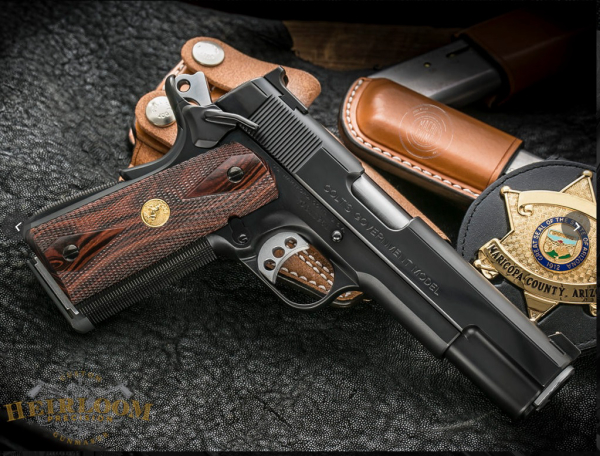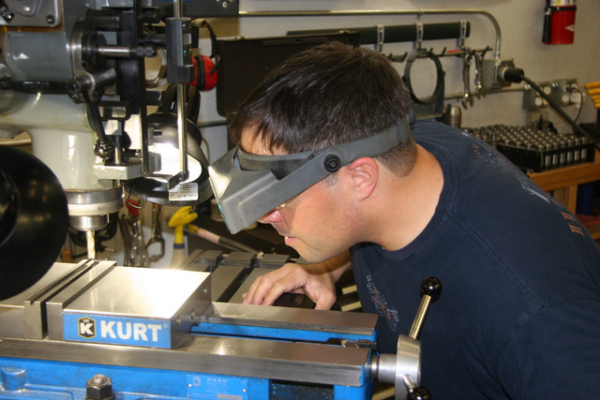
Not too long ago I was at the trap range shooting with a group of friends, all of whom were 70 years of age or more. As normal, we talked about the guns, hunting and competitive shooting of our past, basically relating the experiences of our individual “good old days.” Someone made a comment about us being lucky to have been raised shortly after the culmination of the “golden age” of firearms. “S”-framed Smith & Wessons, pre-war Commercial Colt 1911’s and pre-64 Winchesters collectively evoke a “they don’t build them like they used to” from my shooting buddies. The same is often mentioned when talking about the gunwriters and gunsmiths of the past. Names of scribes like Skeeter Skelton, Jack O’Connor and Gene Hill as well as pistol-plumbers like Jim Hoag, Austin Behlert and Armand Swenson echo with a warm nostalgic, “we’ll never see their like again.”
When considering gun writers; if there’s an equal to Skeeter, Jack or Gene, I’ve yet to discover them. However, when evaluating pistol-smiths that specialize in the 1911 platform, contemporary top practitioners are the finest that have EVER existed. This is due in part to the advancement of technology, metallurgy, parts availability and “race-track” experience. Plus after almost 110 years of refinement, the bugs have pretty well been worked out of John Browning’s design, and it had very few to begin with. Not unlike Keith Richards and Betty White, the 1911 is still performing superbly, long after its “use by” date.
1911’s run the spectrum from Timex to Rolex. On the high end, there are a handful of craftsmen that build one-off, bespoke guns of heirloom quality. Jason Burton, owner of Heirloom Precision is in that lofty fraternity of top practitioners that are the finest that have ever existed.
I first met Jason at Thunder Ranch where he was functioning as a co-instructor for Clint Smith. His command-presence on the range-deck belied his youthfulness. Clint said, “here try this,” and took my pistol out of my holster and inserted his Burton .45 in its place. The gun was in a word, “spectacular.” Jason has co-instructed at least 3 Thunder Ranch classes that I’ve taken and I’ve found him to be a superb shooter, a wonderful instructor and an astonishing pistol smith.
I had an opportunity to sit down with Jason at his shop and solicit his opinions on potential alterations to the 1911 that “gun guys” have argued about for years.
Full Length Guide Rods
GM: “Jason, what’s you take on full length guide rods?”
JB: “If you want the gun to be heavier, they’re good. I’ve never seen a gun work better or worse, with or without one.”
GM: “Do they keep the spring from binding?”
JB: “That’s physically impossible. In a 5” Govt. Model there’s so much captured portion inside the gun, only about 3-5 coils are unsupported by either the guide rod or the spring plug itself, it’s captured. Personally I don’t think that they have any bearing from a functioning standpoint”

Sights
GM: “Tell me you opinion on rear sights, fixed or adjustable?”
JB: “Most of the sights that I install are fixed sights because most customers request them. You can’t really make a point that fixed sights aren’t going to be more durable simply because there aren’t any moving parts. Sight technology has gotten better over the years and with adjustable sights the current BoMar copies are the best they’ve ever been. I prefer fixed sights on my personal carry guns because of the overall durability and the smaller profile.”
GM: “How about front sights? What’s your preference?”
JB: “My answer to front sights is 100% ‘yes’ to whatever the client wants. I used to think that a carry gun had to have a tritium front sight because I need to be able to see it in the dark. More important than what’s in the front sight is the front sight width that allows the shooter to see want they need to see in terms of both the front sight and the target. When I started shooting seriously, everything was .125” rear notches and .125” front sight, that was kind of an industry standard. Around 2003 wider rear notches of about .140” became popular but the front stayed at .125” because guys wanted more light because they wanted more speed. I went on that bandwagon but found that it didn’t help me with either speed or accuracy. When I went back to .125” rear and front that tighter sight picture didn’t allow as much windage error and helped me shoot better with speed at distance. I decided to go in a different direction and asked, ‘what is my front sight obscuring or covering at 25 yards?’ I found that a .100” with a fiber optic is the best for me, but it’s different for everybody. At 25 yards it only covers 4” which still leave an inch on either side of the “A” zone and my eyes are still good enough that I can see the “A” zone at 25 yards. I think that for the individual shooter the most important aspect for how the front sight works for them is the width more than what’s in the front sight whether it’s a green or red fiber optic or tritium or a gold line. The key is does it allow the shooter to see what they need to see.”
Ambidextrous Safeties
GM: “Does a ‘Combat Gun’ need an ambidextrous safety?”
JB: “Even a good ambi-safety can present problems. I grip the gun so high that the lever on the right side of the gun bangs into my right knuckle and I will have problems disengaging the safety. That causes two things, one, either the safety doesn’t come off every time or the safety comes off enough to allow the hammer to fall but then the slide reciprocates and the notch hits into the backing plate on the safety. One can narrow the paddle to avoid this. When I set up an ambi-safety for a guy I like to see how his hand is setting on the gun because this will help me determine how wide the safety needs to be and where the safety meets the backing plate, i.e. do I need to move this forward so it won’t bang into a knuckle. Like sights, it’s one of those things where you’ve got to take into consideration how the user interfaces with the gun and put it into the equation so that you don’t just throw a safety on the gun that the user won’t be able to use.”
GM: “Is it safe to say that most people would be best served to leave the factory safety alone?”
JB: “Yes, unless you’re left handed and need an ambi, you probably shouldn’t get one. If a person says they want one that’s extended because of the way their thumbs are shaped or they want to be able to turn it off with gloves, all of that is valid. Regardless of what you’re going to use the pistol for you have look at what problem is it going to solve. For most people an ambi becomes a luxury item.”
GM: “How do feel about low-mount slide safeties?”
JB: “I personally don’t like slide safeties with the lever lowered on the backing plate because they absolutely won’t work with my grip. What they will do is lower your thumb and move it into a position where the palm of your hand closes more on the grip safety. If you have a problem de-activating the grip safety they’re fine but they limit how high you can get a grip on the gun.”
Series 80 vs Series 70 1911’s
GM: “Should a person avoid Series 80 1911’s if they want a custom built pistol?”
JB: “There’s no downside to the Series 80. I’m not opposed to Series 80’s components at all; that doesn’t mean that I WANT them, I’m just not opposed to them. When they are properly set up and the levers are correctly timed they’re of no consequence and you can do a trigger job on a Series 80 where you won’t notice the levers. By ‘correctly timed’ what I mean is that I would like the pre-travel on the trigger to allow the plunger lever to lift the plunger enough that when you’re at the sear wall the plunger is out of the way and the firing pin is free to move, I think that that is perfect timing in an 80 Series gun. If a client says that he wants a 1 1/2 lb. trigger on a gun a Series 80’s not for them. That’s because you’ve already got an extra spring and you’ve got these levers and you might have tolerance stacking and you might feel it more. When you get to a trigger that’s that light, EVERYTHING matters. If you want a 4 lb. trigger they’re fine however you’ve got to be ok with the gun being more complicated to put back together.”
The remainder of this piece will run next week in Shooting Wire.
Greg Moats was one of the original IPSC Section Coordinators appointed by Jeff Cooper shortly after its inception at the Columbia Conference. In the early 1980’s, he worked briefly for Bianchi Gunleather and wrote for American Handgunner and Guns. He served as a reserve police officer in a firearms training role and was a Marine Corps Infantry Officer in the mid-1970’s. He claims neither snake-eater nor Serpico status but is a self-proclaimed “training junkie.”